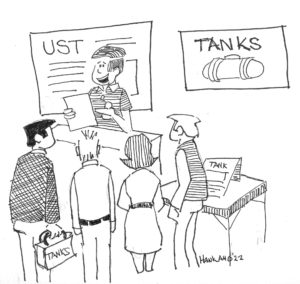HRSC Pilot Study at South Carolina LUST Sites (NTC 2022 Preview)
Lessons Learned and Best Future Use
In 2019 and from 2021 to 2022, the UST Management Division of the South Carolina Department of Health and Environmental Control conducted a large-scale pilot study of HRSC technologies. The pilot test was conducted by selecting 36 sites throughout the state in various stages of corrective action and assessment and with varying types of geology. The sites were then split into three solicitations and advertised for competitive bidding by UST certified contractors to achieve cost control.
The UST Management Division gained valuable data from the pilot study that will improve our management of LUST sites in the future. This includes, but is not limited to, improved site conceptual models through an improved understanding of LNAPL and dissolved contaminant distribution and movement in the subsurface.
As a result of this pilot test, the UST Management Division gained a better understanding of what the ideal candidates for HRSC technologies are in the state of South Carolina. In addition, there were many lessons learned such as the limitations of the technologies; the physical, geological, and mechanical challenges; the information provided; the costs versus benefits; and when these technologies may be used at sites in the future. Ultimately, the UST Management Division hopes to use the data collected during this pilot study to develop a rate structure for more widespread use at LUST sites across the state.
This presentation will be given by Corie White, South Carolina UST Management Division, as part of the “Site Assessment II: High Resolution Site Characterization” session at the 2022 National Tanks Conference. This session will provide case studies highlighting strategies for site characterization methods to refine the conceptual site model and will enforce the importance of relevant physical and chemical data. Come prepared to discuss technologies and techniques to apply scale-appropriate investigations, measurements, and sample density to define contaminant context and distribution with greater certainty.

